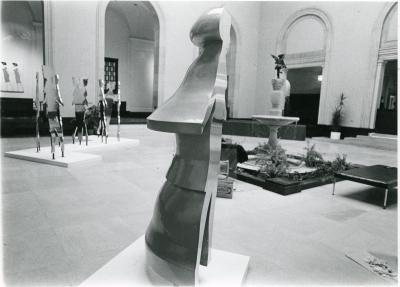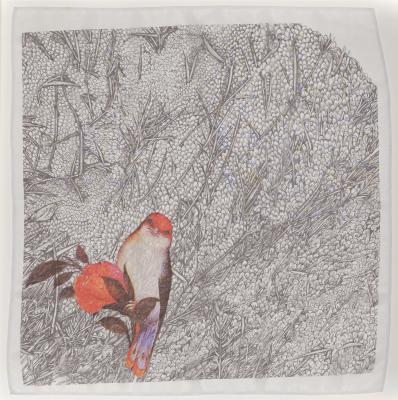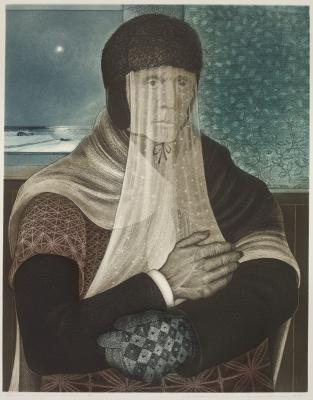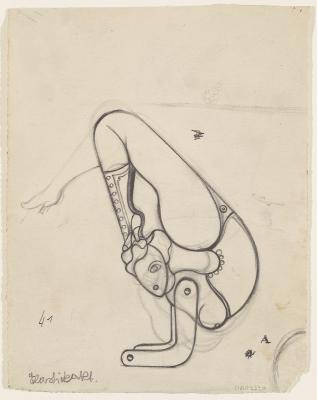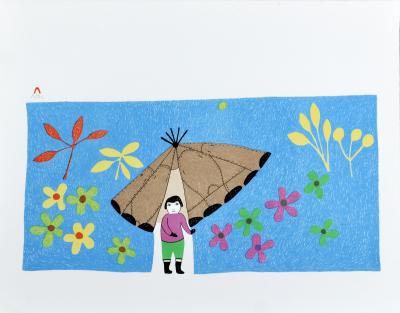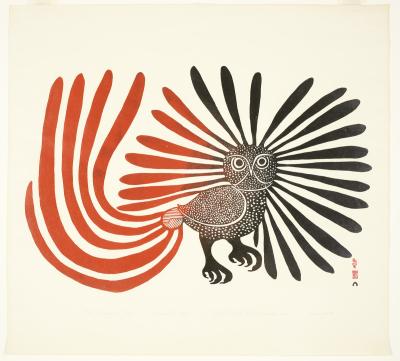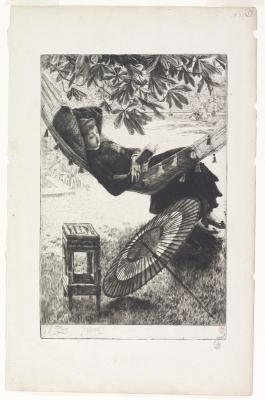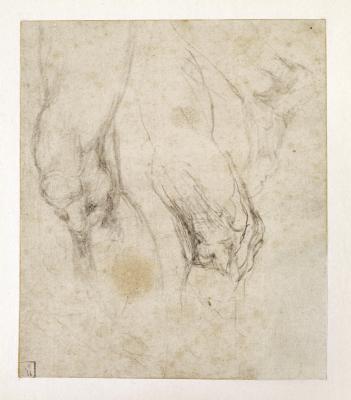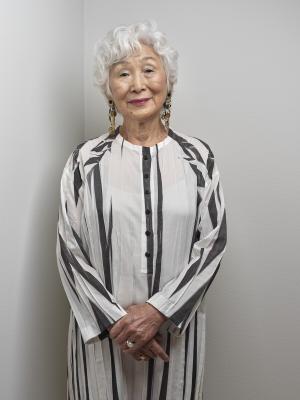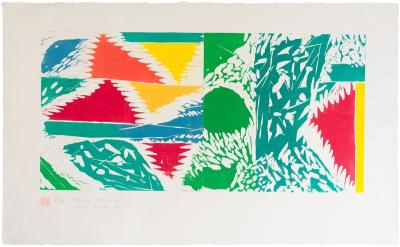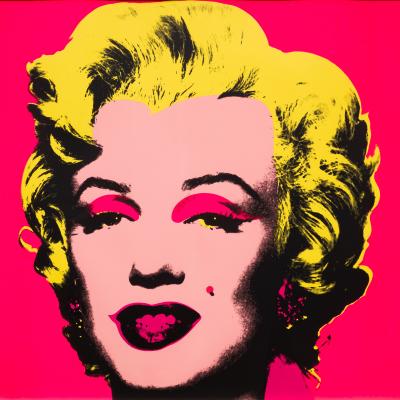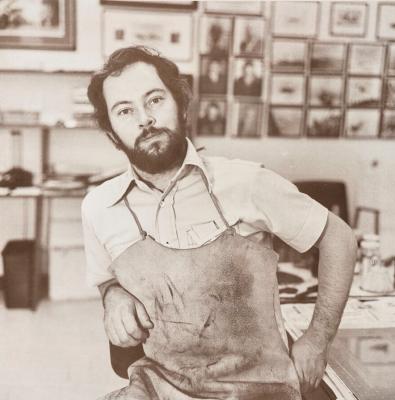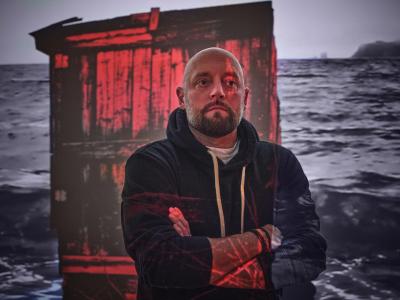David Blackwood: Printing the Soul of Newfoundland
Learn about the master printmaker’s life and career, as seen in his AGO retrospective exhibition
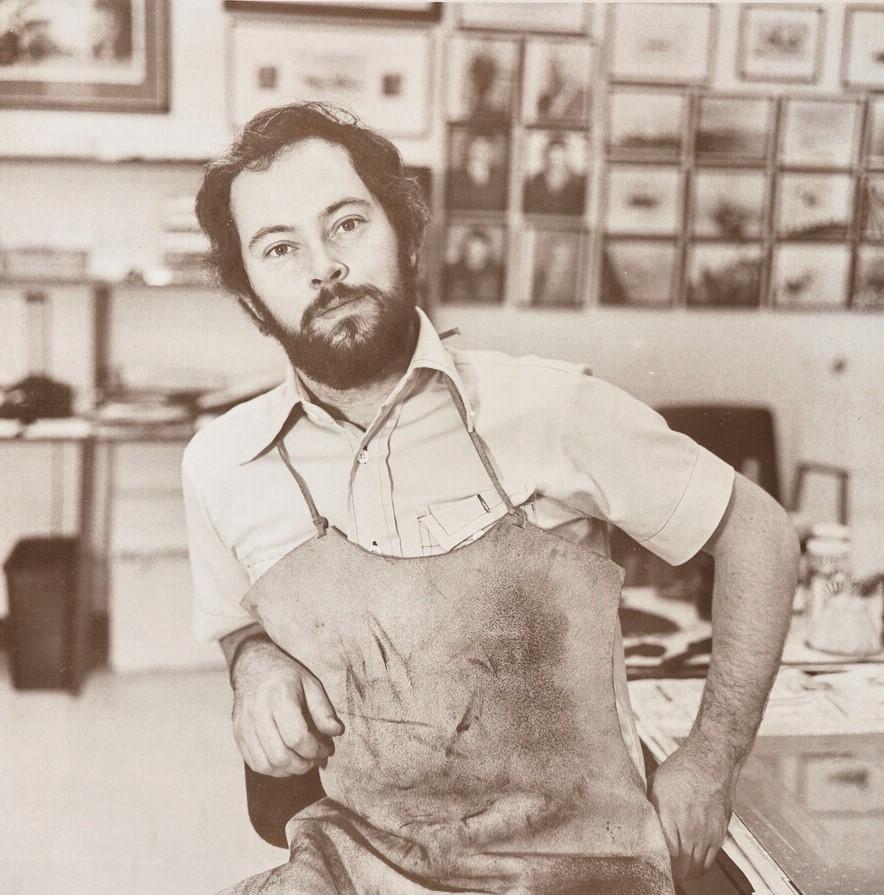
David Blackwood at Erindale College, ca. 1969. Edward P. Taylor Library & Archives, Art Gallery of Ontario. Gift of David and Anita Blackwood, 2018. Photo: AGO.
David Blackwood (1941 – 2022) created art that celebrates the spirit and mythology of coastal Newfoundland. Born into a lineage of seafaring tradesmen dating back multiple generations, his fate as a master printmaker was unlikely to say the least. After over 60 years of depicting the mystique of the North Atlantic, Blackwood firmly cemented himself as one of the most iconic Canadian artists of all time.
Blackwood’s distinct approach to printmaking was completely self-contained and developed over the span of his career. His process consisted of several key phases, including a full-scale pencil drawing, a two-step transfer process using wax, the application of acid and powdered resin, and then the creation of countless early “proofs” to perfect a print’s dimensions. The full trajectory of Blackwood’s work and life is chronicled in the new exhibition David Blackwood: Myth & Legend, on view now at the AGO.
Following Blackwood’s career from his beginnings as an art student to his final drawing, this retrospective exhibition brings together more than 80 prints and drawings, alongside proofs, copperplates, and archival materials. Curated by Alexa Greist, Curator & R. Fraser Elliott Chair, Prints and Drawings at the AGO, the show invites visitors to witness the evolution of a beloved Canadian artist. Blackwood’s creative realm encompasses childhood memories, dreams, superstitions, legends, and oral traditions, all drawn from the shores of Newfoundland.
Take a closer look at five chapters of his life story illustrated in David Blackwood: Myth & Legend.
1940s to 1950s – The Wesleyville Days
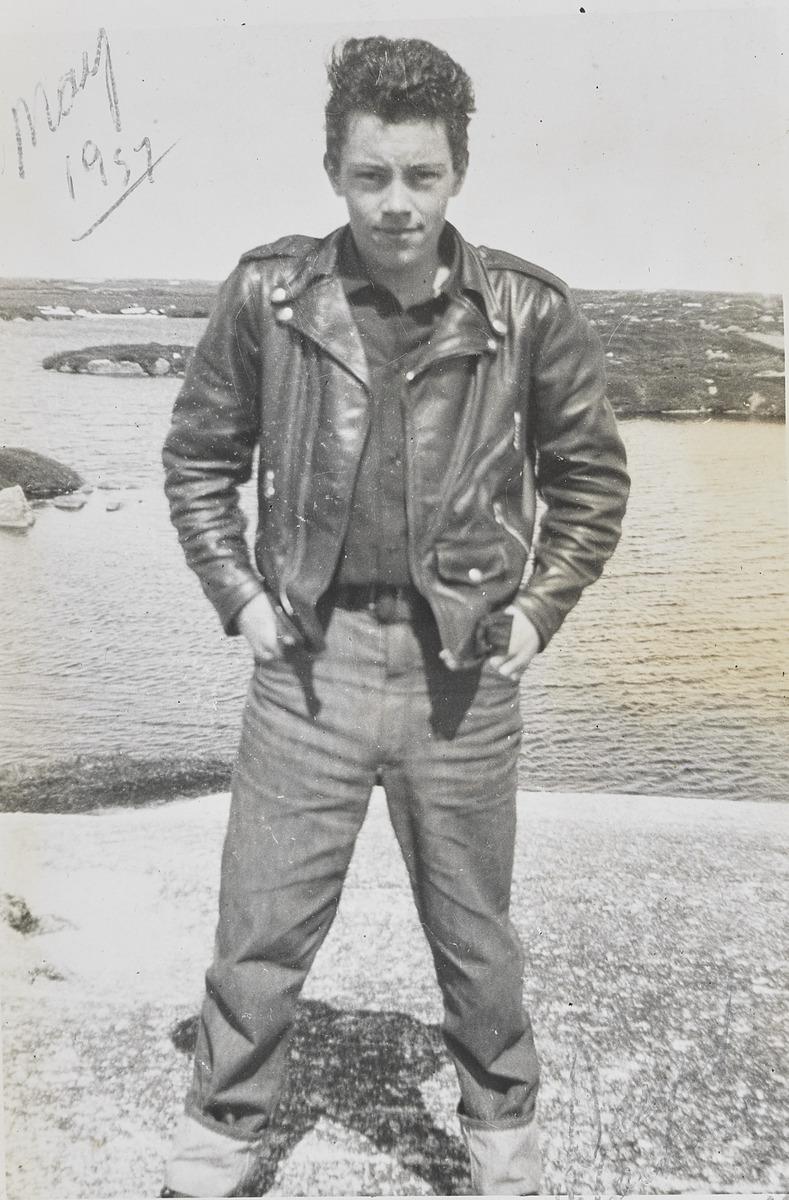
David Blackwood, Wesleyville, 1957. Edward P. Taylor Library & Archives, Art Gallery of Ontario. Promised Gift of David and Anita Blackwood, Port Hope, Ontario. © Estate of David Blackwood.
David Blackwood was born on November 7, 1941, in the small coastal community of Wesleyville, Newfoundland, to Sea Captain Edward Blackwood and Molly Glover. Although his childhood was spent engaging in the maritime traditions of his family, by his teen years, Blackwood had chosen the path of an artist. By age 17, he had already established two art studios in Wesleyville. After receiving the Government of Newfoundland’s Centennial scholarship in 1959, Blackwood left the province to attend school at the Ontario College of Art (now OCADU) in Toronto.
1960s to 1970s — Career Inception
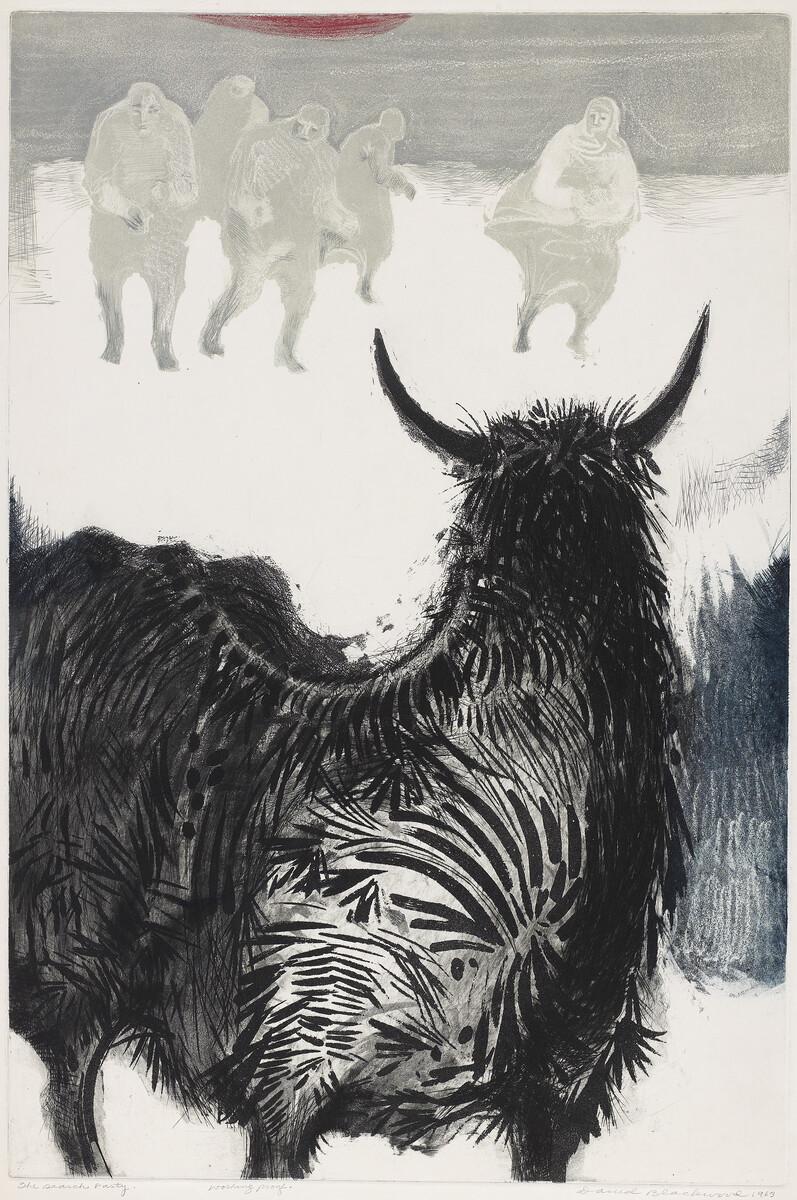
David Blackwood. The Search Party, 1963. Colour etching, aquatint and drypoint on paper, Image: 74.7 x 50 cm. Art Gallery of Ontario. Gift of David and Anita Blackwood, Port Hope, Ontario, 1999. © Estate of David Blackwood. Photo: AGO. 99/888
Blackwood graduated from art school in 1963 and immediately set out to establish his career as a professional artist. He got off to an exceptional start when the National Gallery of Canada bought and exhibited his print The Search Party (1963) in 1964. A few years later, he became the first-ever artist-in-residence at Erindale College (now University of Toronto, Mississauga).
As the decade shifted to 1970, Blackwood started a family. He married his wife, Anita, in 1970, and they welcomed their son, David Bonar Blackwood (known as David Judah), the following year. Blackwood’s profile as an artist continued to grow. In 1972, his friend, author Farley Mowat, used Blackwood’s etching The Burgeo Whale as the official artwork for his novel, A Whale for the Killing. A National Film Board short documentary about the artist, entitled Blackwood, was nominated for an Academy Award in 1976.
1980s to 1990s – Order of Canada
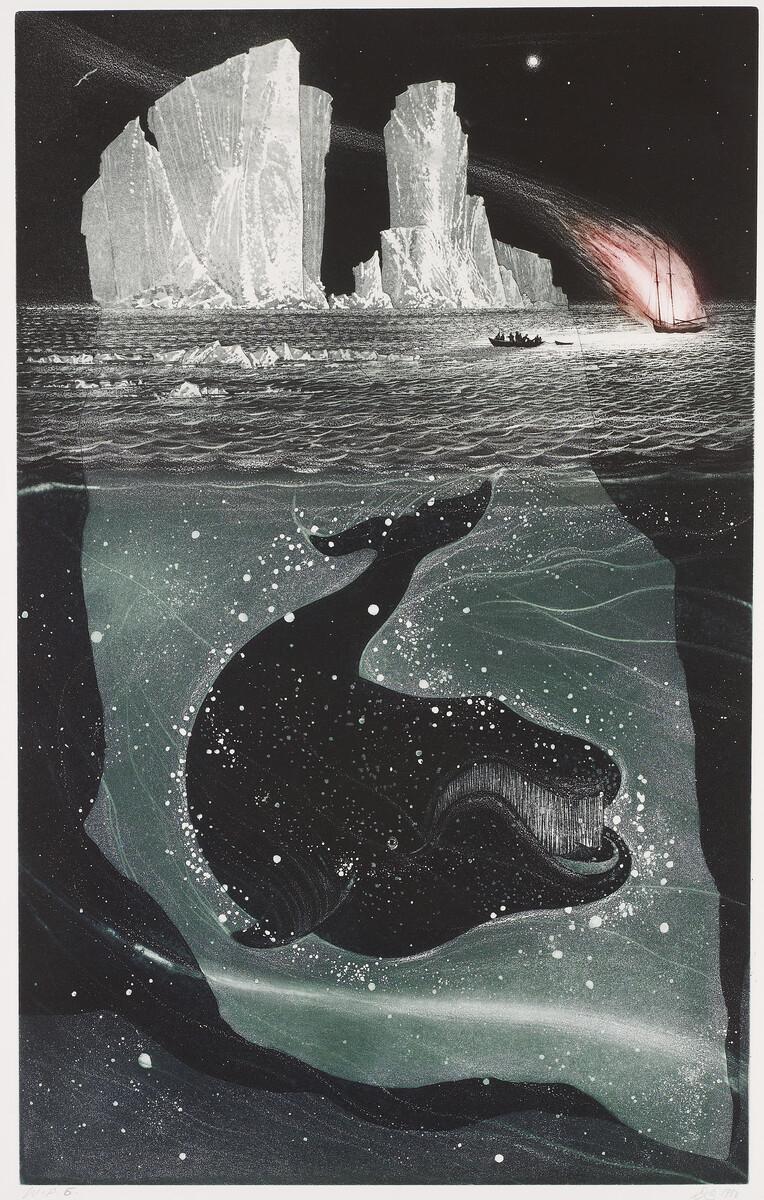
David Blackwood. Fire Down on the Labrador, 1980. Colour etching and aquatint on paper, Overall: 90.5 x 61.8 cm. Art Gallery of Ontario. Gift of David and Anita Blackwood, 2011. © Estate of David Blackwood. Photo: AGO. 2011/303
In 1980, David Blackwood created what is arguably his best-known work: Fire Down on the Labrador. The masterful print depicts dual realities of the sea, featuring a distressed ship ablaze on the water and a hyperbolically massive baleen whale below the surface. The work is often cited as a pure representation of Blackwood’s artistic voice.
By the 1990s, Blackwood’s position as a seminal Canadian artist had been solidified. In 1992, Erindale College unveiled Blackwood Gallery, named after the esteemed alumnus. The same year, The Memorial University of Newfoundland awarded Blackwood an honorary degree, followed by the University of Calgary the following year. In possibly the greatest honour of his career, Blackwood was awarded The Order of Canada in 1993.
2000 to 2013 – The AGO Era
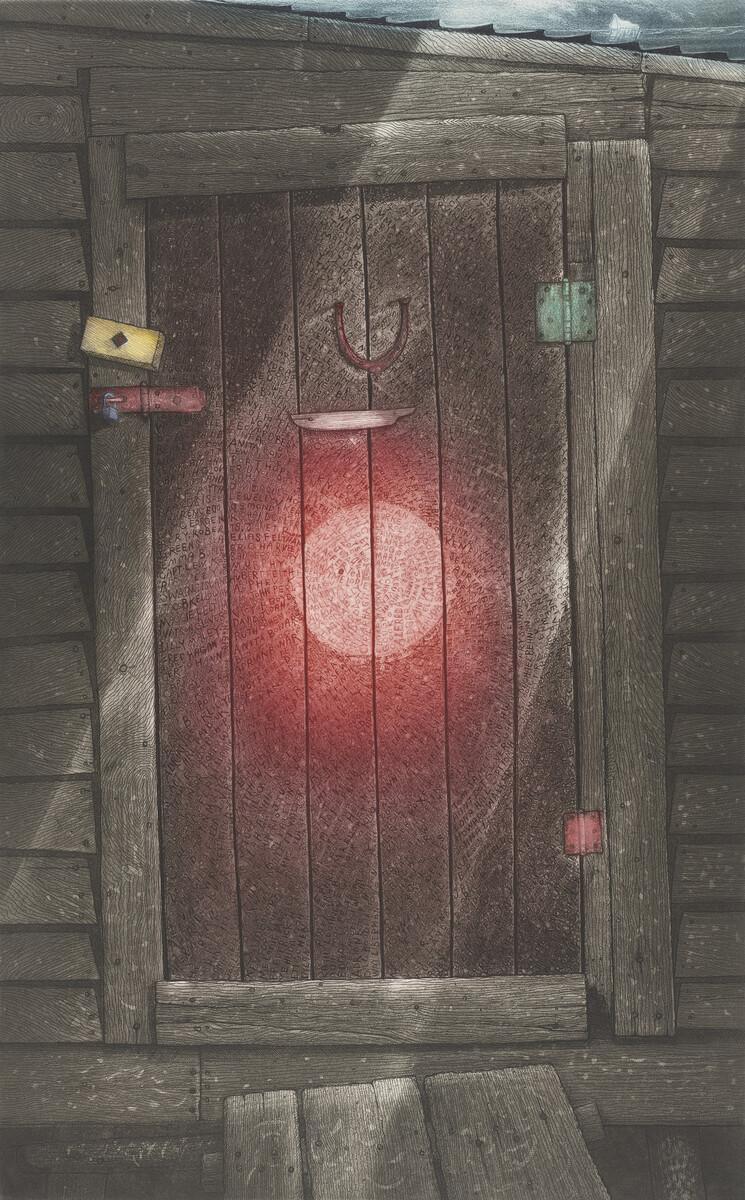
David Blackwood. Autobiography, 2010. Etching, aquatint, Plate Mark: 81.2 × 50.7 cm. Promised Gift of Anita Blackwood, Port Hope, Ontario. © Estate of David Blackwood.
Blackwood gifted the AGO 90 works in 2000, helping to establish the Blackwood Research Centre in the Marvin Gelber Print and Drawing Centre – the Collection now has over 300 works. Fittingly, three years later, he became the first practicing artist to be named chairman of the AGO.
In 2005, tragedy struck Blackwood’s life when his son, David Judah, passed away from cancer at the young age of 34.
Blackwood returned to Newfoundland to purchase the shed of his former neighbour Ephraim Kelloway. The door to Kelloway’s shed was a recurring object and motif in Blackwood’s work, as seen in his 2010 print, Autobiography. After his purchase, Blackwood removed the shed’s door and brought it back to his studio in Port Hope, Ontario. In 2013, he sent the door back to Newfoundland, to the cultural facility The Rooms, as a permanent home.
2014 to 2022 – Returning to Aunt Julia
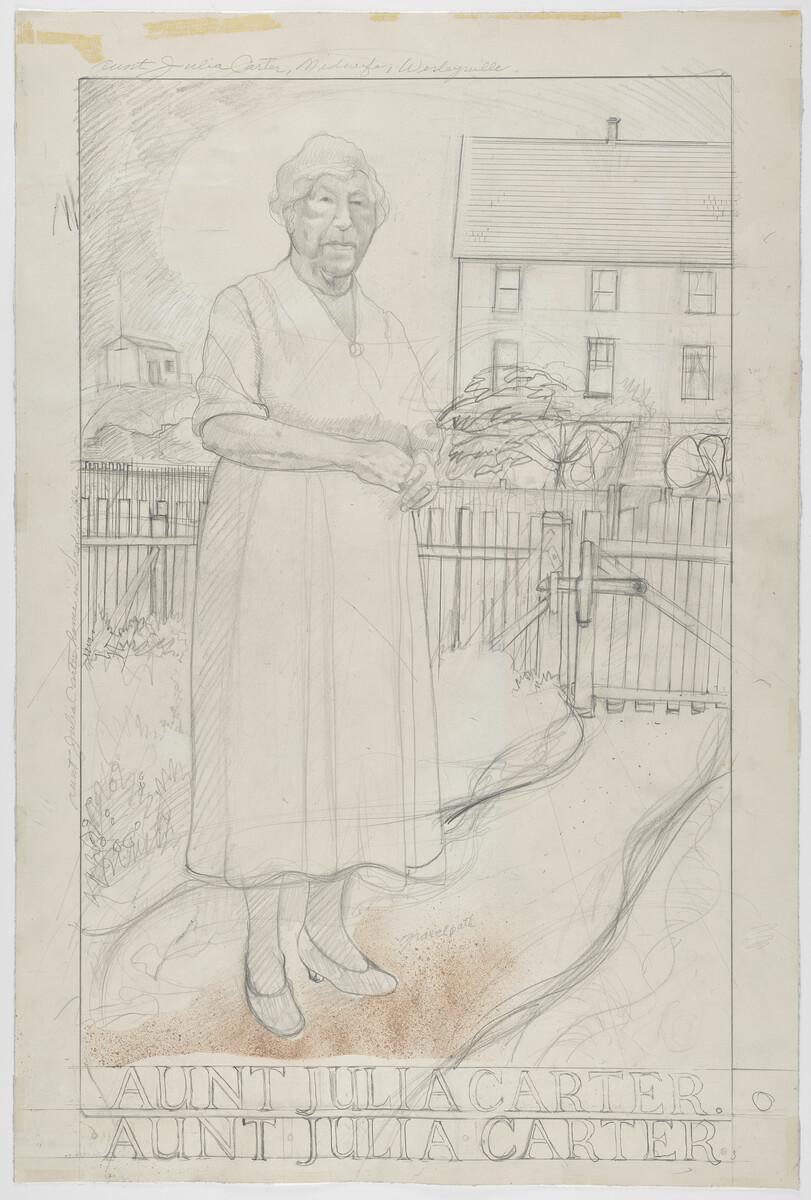
David Blackwood. Aunt Julia Carter, 2020. Graphite, Watercolour, Sheet: 91.9 × 61.2 cm. Promised Gift of Anita Blackwood, Port Hope, Ontario. © Estate of David Blackwood.
In 2014, Blackwood battled and survived a life-threatening illness. Throughout his years in recovery, he continued to draw and create prints with the help of his beloved studio manager and friend, Janita Wiersma. Blackwood continued to make work well into his 70s, creating his final prints, Wedding at Deer Island (2020) and Search Party: Lost (1970 – 2021).
Poetically, his final creative effort was a large preparatory drawing of the Wesleyville midwife who delivered him, Julia Carter. Affectionately referred to as Aunt Julia, Carter was a beloved figure in Blackwood’s hometown. She represents the perfect bookend image for his legendary body of work.
Blackwood died peacefully in his Port Hope home at the age of 80, with his wife Anita by his side.
Experience the complete evolution of Blackwood’s life and work in David Blackwood: Myth & Legend, on view now on Level 1 of the AGO.
